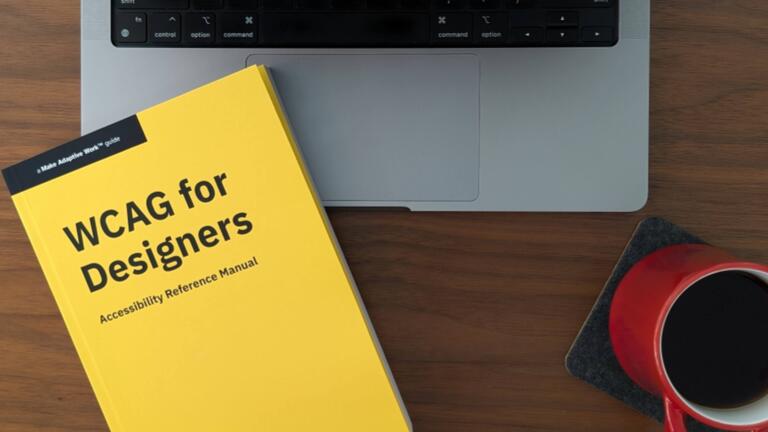Stacey Swinehart Ganderson on Design and Digital Accessibility


Stacey Swinehart Ganderson, a Communications Design alum from Carnegie Mellon University’s School of Design (BFA ’00), has dedicated her career to inclusive design. With Stacey’s latest book, “WCAG for Designers: Accessibility Reference Manual,” she’s looking to establish guidelines for greater web accessibility for all.
“Designers are responsible for ensuring that as many people as possible can successfully use the products, services, and experiences they create,” said Stacey. “However, over the years, I noticed that there has often been confusion about how usability and design are connected with accessibility and WCAG (Web Content Accessibility Guidelines), other than some basic considerations for color contrast. I wanted to bridge the gap between accessibility requirements, which are required by law in many countries, and how they relate to design considerations.”
According to studies, everyone will experience disability at some point in their lives due to aging, changes in health, accidents or injuries, caring for a loved one, etc. According to the World Health Organization, about 1.3 billion people globally experience significant disability today.
“Yet, according to the WebAim Million 2024 report, 95% of website homepages still fail basic accessibility requirements,” added Stacey. “Considering the number of disabled people worldwide and the stringent accessibility laws in many countries, this percentage is staggering.
“We live in a digital age, and many daily necessities are online, including banking, healthcare, grocery shopping, and news access,” continued Stacey. “Excluding people with disabilities from using these tools online is telling them that they don’t matter.
“Without equitable access, people’s lives and livelihoods are at risk.”

After reading this book, Stacey hopes designers will better understand how they play an integral part in achieving digital equity and feel more confident in their ability to start embedding accessibility into their design thinking and daily practice.
Stacey’s creative drive continues with several projects in the pipeline. One notable endeavor is a book on work accommodations, integrating trauma-informed care and inclusive design. This project aims to help businesses understand and meet their employees’ needs ethically and legally.
Stacey cites the foundational design she learned at the School of Design for still playing a vital part in her work.
“Thanks to all of the design crits we conducted, I’ve been better prepared and comfortable sharing work-in-progress and giving or receiving feedback,” said Stacey. “I don’t see my work as something precious. My dad used to tell me that 90 percent of what a designer does is crap. But it gets us to that other 10 percent.”
Stacey’s dad was legendary Communications Design Professor Emeritus Bob Swinehart. Many of her favorite memories in Design revolve around her dad, from lunches on Wednesdays to having her diploma handed to her by him on stage. You can read our tribute to Bob here.
“Spending time with pen and paper was invaluable,” continued Stacey. “Too many designers hop onto Figma or Sketch from the start, missing critical time in the thinking and brainstorming aspects that come from pen and paper or marker and whiteboard (or digital whiteboard). These days, there’s too much focus on tooling rather than thinking in the industry.
“I’ve found that the emphasis on and attention to quality of craft and design rationale we had at CMU helped me throughout my career, whether in print or tech, as an individual contributor or a people manager, or even as an entrepreneur.”
Starting Sept 16, 2024, WCAG for Designers: Accessibility Reference Manual can be purchased in paperback, PDF, or ePub. More information can be found at www.makeadaptivework.com.
ePub: Google Play Books
Paperback and PDF: Etsy